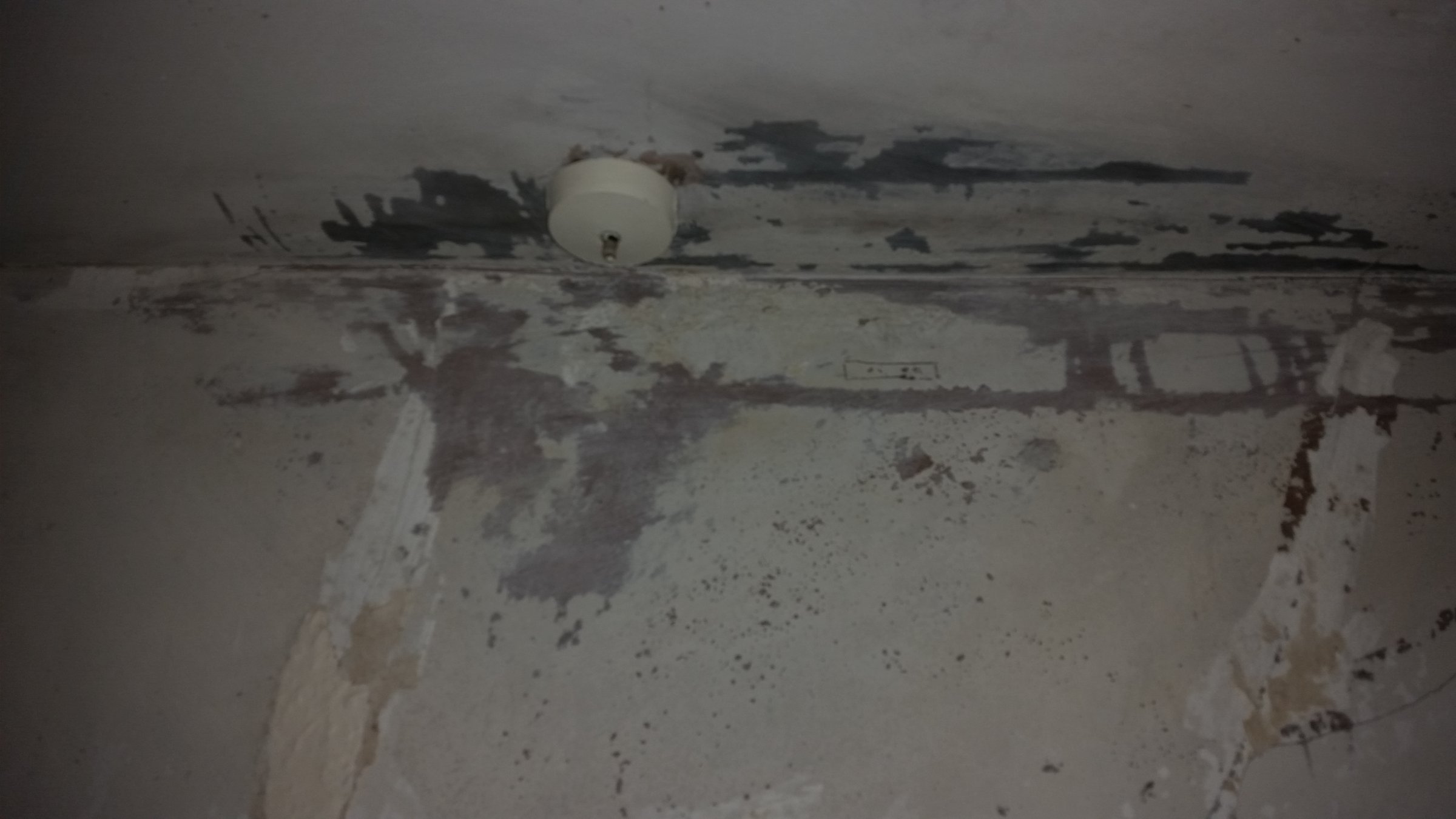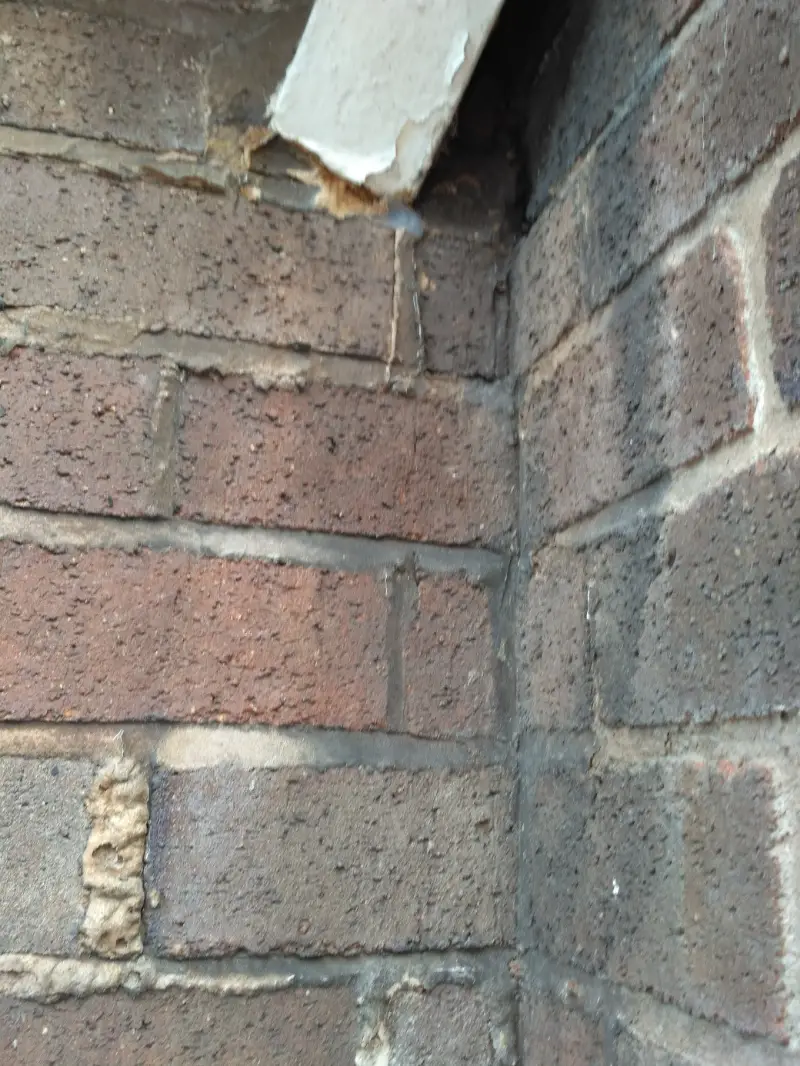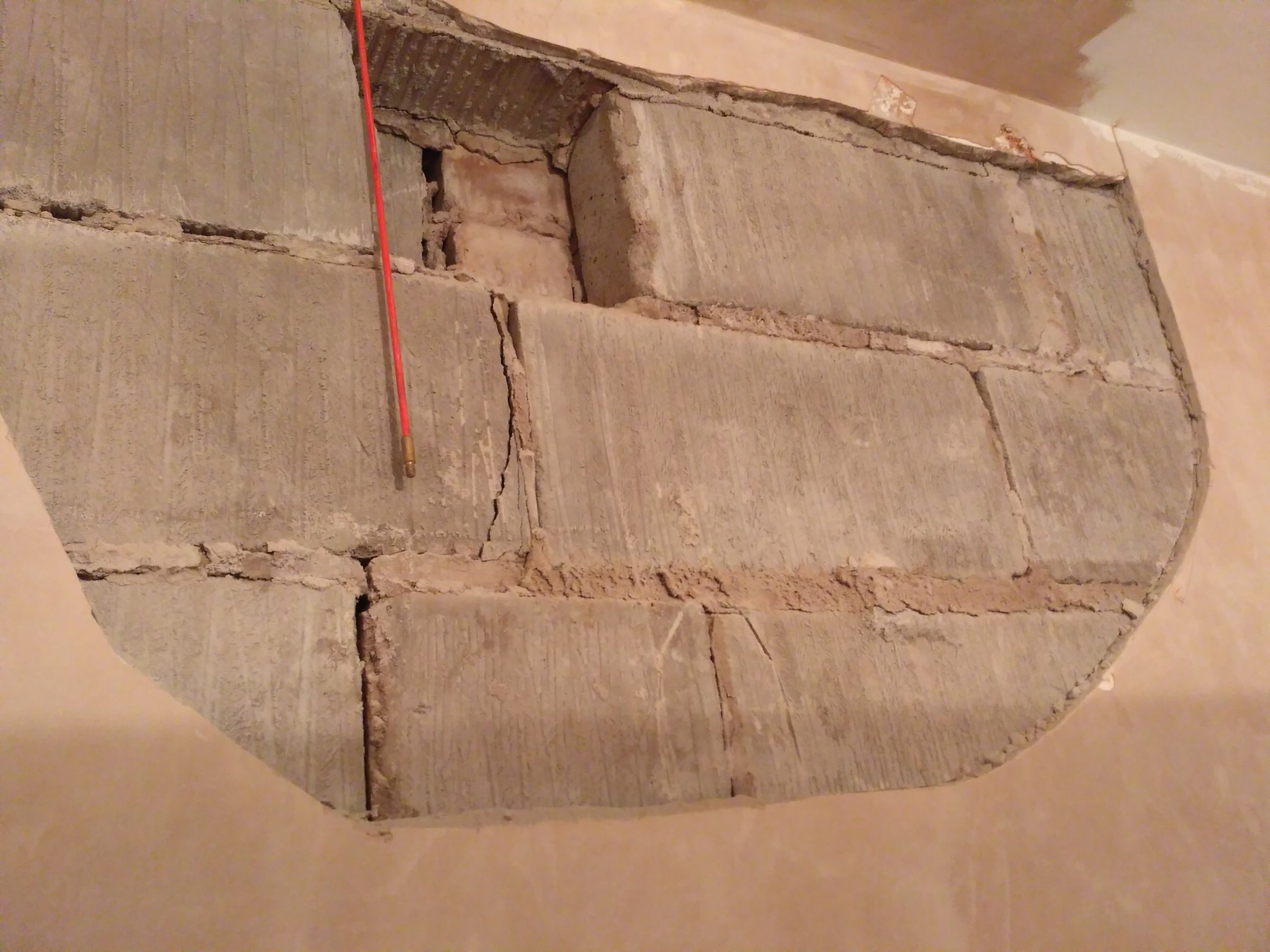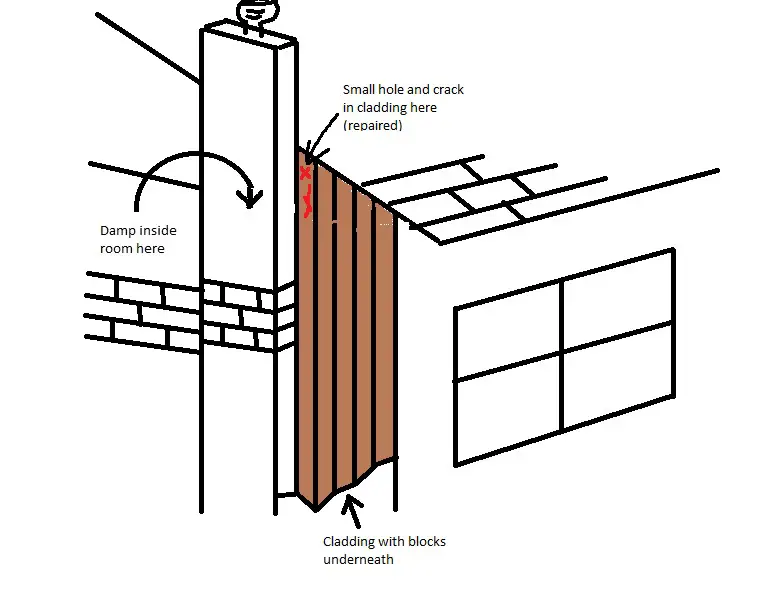Hi all,
Having a bit of trouble locating the source of a damp patch in a bedroom. Has been like this since we moved in and I thought it would've dried out by now but it hasn't.
As you can see from the layout pic, the most obvious place is water coming from the chimney flashing but I've been up there and checked and I can't see anywhere water would come in from.
This chimney serves as a flue from the boiler and wondering if this could also be a source of vapour? I'm still leaning towards the chimney even though I've been up there and checked (and also one part where it looked possible water could get in, I've pushed some extra lead underneath to make sure. I can take a pic at the weekend.
Am planning on taking off the wall plaster soon and see if the wall is damp behind it (probably). I have a tester and is around 33% or so at the join with the ceiling and is about 1m sq patch (although is semi circular in shape).
To totally rule out the chimney join with the roof, would it be worth putting something temporary around it to determine the source? I've got a dehumidifier in the loft which is collecting water - the wall in there is damp also.
Appreciate any help!
Having a bit of trouble locating the source of a damp patch in a bedroom. Has been like this since we moved in and I thought it would've dried out by now but it hasn't.
As you can see from the layout pic, the most obvious place is water coming from the chimney flashing but I've been up there and checked and I can't see anywhere water would come in from.
This chimney serves as a flue from the boiler and wondering if this could also be a source of vapour? I'm still leaning towards the chimney even though I've been up there and checked (and also one part where it looked possible water could get in, I've pushed some extra lead underneath to make sure. I can take a pic at the weekend.
Am planning on taking off the wall plaster soon and see if the wall is damp behind it (probably). I have a tester and is around 33% or so at the join with the ceiling and is about 1m sq patch (although is semi circular in shape).
To totally rule out the chimney join with the roof, would it be worth putting something temporary around it to determine the source? I've got a dehumidifier in the loft which is collecting water - the wall in there is damp also.
Appreciate any help!











